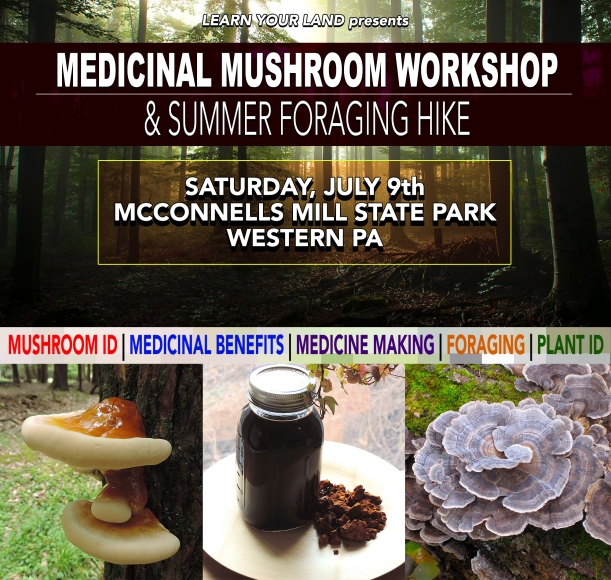On Sunday, November 13th I will be leading a great event — “Fall Flora & Fungi Hike at McConnells Mill State Park” — and, I’d love for you to join us!
Autumn is the perfect time to explore the backcountry in Western Pennsylvania in search of interesting and useful plants, trees, and mushrooms. McConnells Mill State Park, with its deeply-cut gorges, hemlock-lined ravines, whitewater currents, and historical landmarks is a prime area for autumn exploration.
During this event, we will hike a 2-mile loop around the park while discussing various subjects related to Pennsylvania’s flora and fungi, including:
- edible and medicinal plants
- edible and medicinal mushrooms
- tree identification, along with edible and medicinal uses
- medicine-making using wild plants and mushrooms
- natural history of the area
… and more!
The program will entail moderate hiking (the terrain includes some rocks and hills), and the event will take place rain or shine. Please note that in order to maximize your learning experience, space is limited and registration with payment in advance is required to secure your spot. The exact event location will be provided upon registration.
Interested? Here are more details:
What: Fall Flora & Fungi Hike At McConnells Mill State Park
When: Sunday, November 13th 2016
Where: McConnells Mill State Park, Western Pennsylvania
Time: 1-3:30 PM
Investment: $20
To register, please contact me (Adam) at
adam@learnyourland.com
Come celebrate autumn with a great group of hikers on November 13th! We look forward to seeing you there!
Be wild,
Adam Haritan








 “Juh-wiah-hanne” — a stream flowing in a contrary direction. From that word we get the “Youghiogheny,” a 134-mile long river that flows in a snake-like fashion through West Virginia, Maryland, and Pennsylvania. At its northernmost point, it empties into the Monongahela River.
“Juh-wiah-hanne” — a stream flowing in a contrary direction. From that word we get the “Youghiogheny,” a 134-mile long river that flows in a snake-like fashion through West Virginia, Maryland, and Pennsylvania. At its northernmost point, it empties into the Monongahela River.


 I am happy to announce that I will be leading the “Spring Foraging Hike Around The Lake” event on Sunday, May 22nd at Moraine State Park in Butler County, Pennsylvania.
I am happy to announce that I will be leading the “Spring Foraging Hike Around The Lake” event on Sunday, May 22nd at Moraine State Park in Butler County, Pennsylvania.